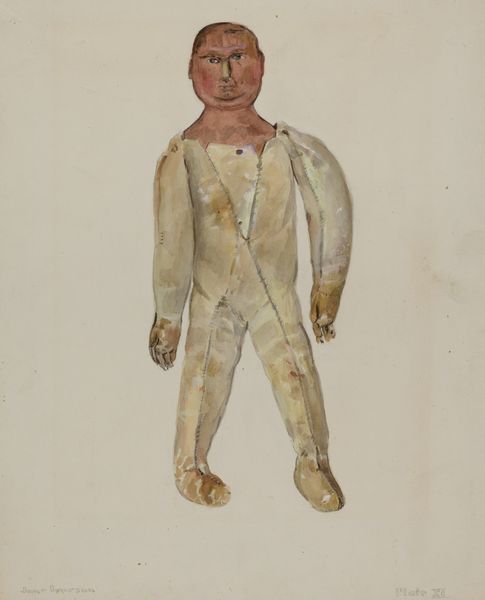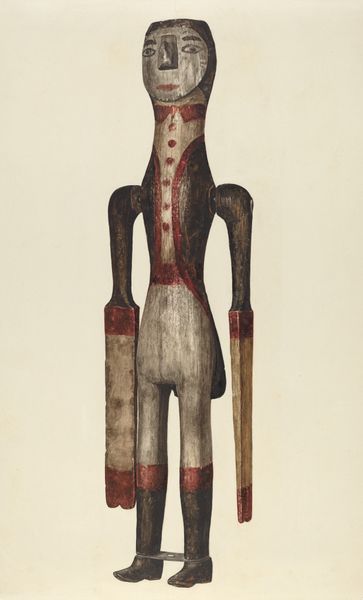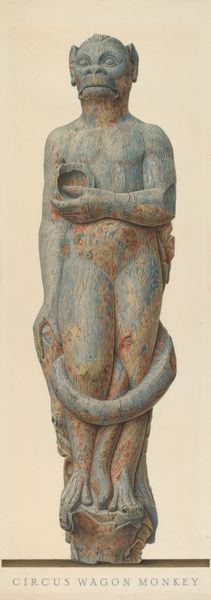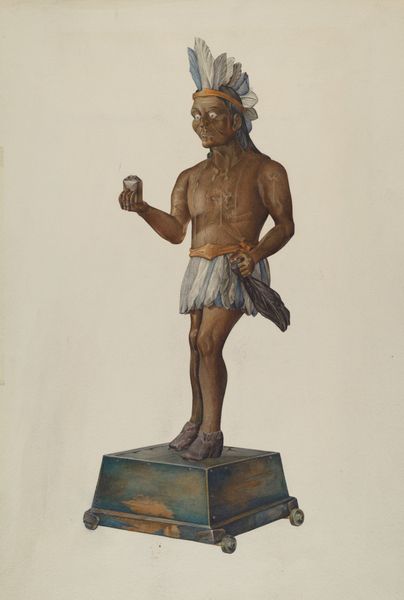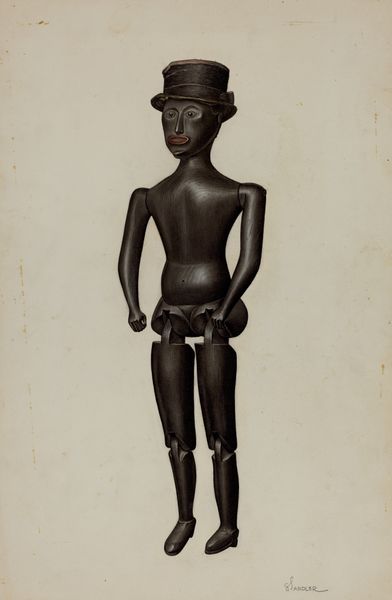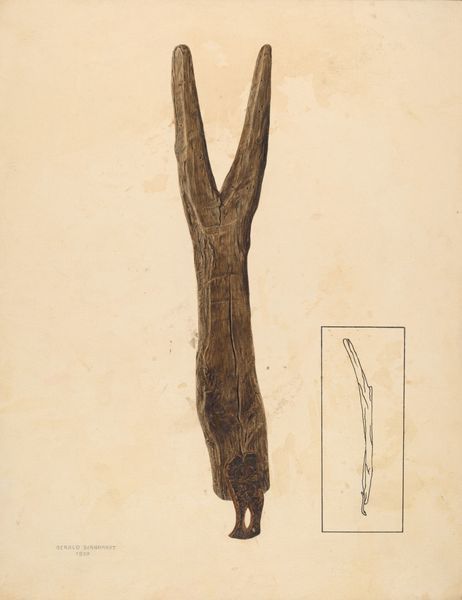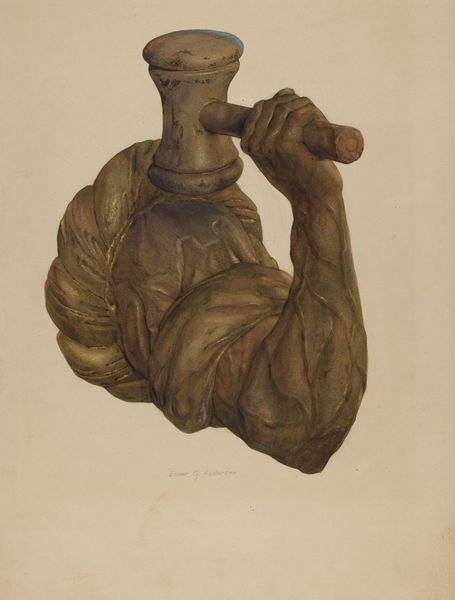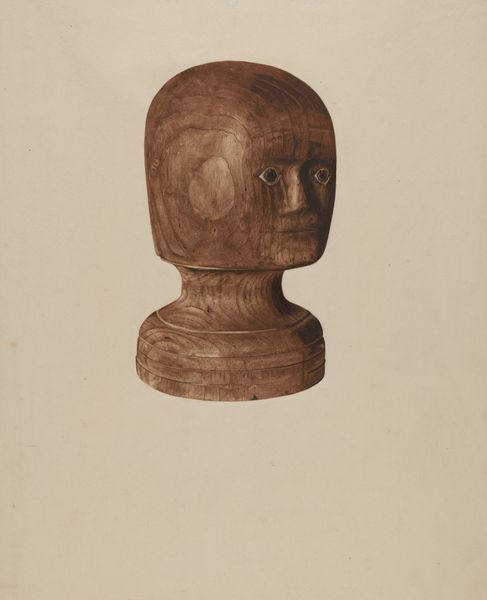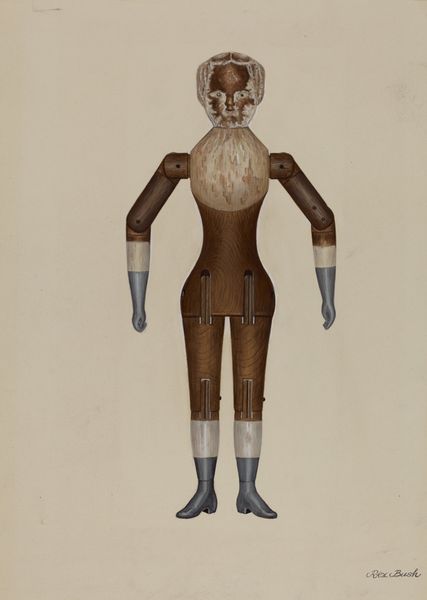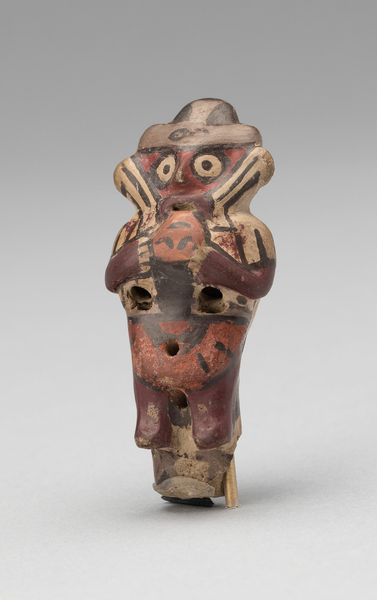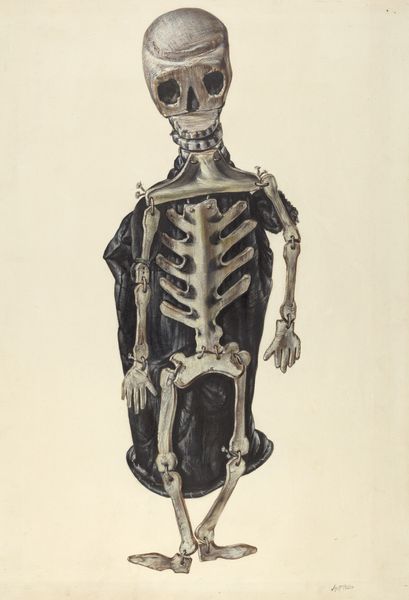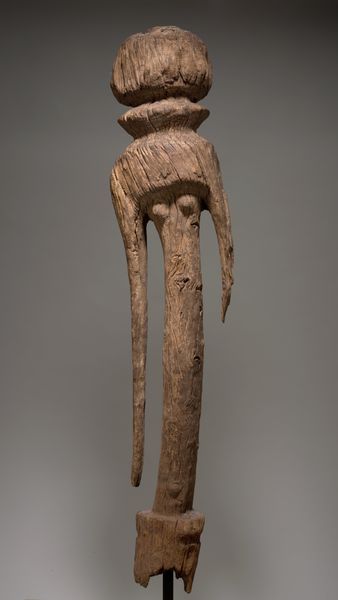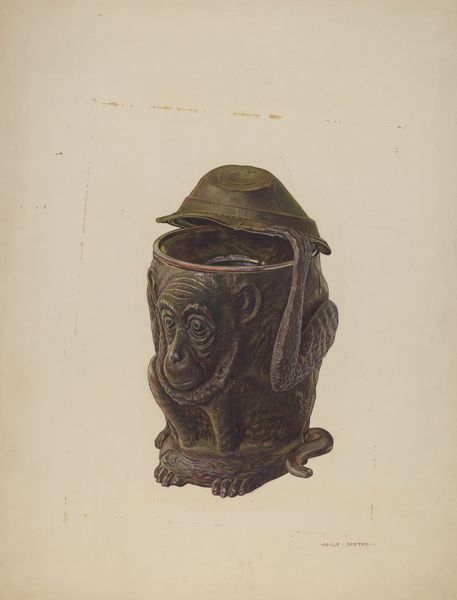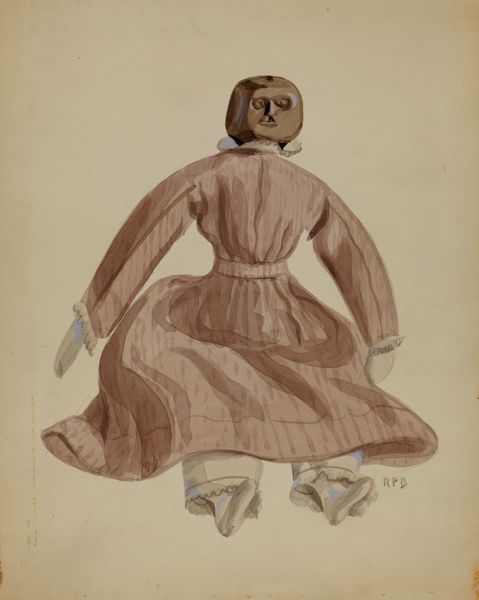
drawing, coloured-pencil, wood
#
portrait
#
drawing
#
coloured-pencil
#
charcoal drawing
#
figuration
#
coloured pencil
#
wood
Dimensions: overall: 32.1 x 22.4 cm (12 5/8 x 8 13/16 in.) Original IAD Object: 12" high
Copyright: National Gallery of Art: CC0 1.0
Curator: Ah, here we have Elmer R. Kottcamp's "Carved Wooden Doll," created around 1940. It appears to be a rendering in coloured pencil and charcoal, depicting, well, exactly that: a carved wooden doll. Editor: The first thing that hits me is how unsettlingly... angular it is. It feels almost aggressively blocky, but softened by the warm brown tones. It makes me think of folk art meets brutalist architecture. Is that weird? Curator: Not at all! Actually, the doll's construction speaks to broader movements in folk art of the time, where simplified forms and raw materials were elevated. Look at how Kottcamp captures the wood grain with the coloured pencil; he's almost paying homage to the craftsmanship. These dolls, depending on their cultural context, can symbolize anything from protection to fertility. Editor: Yeah, looking at it closer, it’s got this awkward charm. The head especially, these almost vacant features that just happen to coalesce, this lump of a form. Plus those teeny fingers! It reminds me of something a kid might drag everywhere, giving it some deep history only they could understand. Curator: Exactly. Now consider the social climate of the 1940s. Mass production was becoming increasingly dominant. This embrace of handcrafted objects, and their depiction in art, became a quiet resistance against homogeneity. Editor: A rebellious little doll! That adds a whole new layer to those stern angles, doesn't it? Suddenly it’s not just some abandoned toy but a tiny warrior standing its wooden ground. Almost wish I could touch it. You know, see if the artist preserved a smell of wood from carving? Curator: That very physicality would certainly transport you! In drawing this particular object, the artist invites us to appreciate the value and beauty found in the simplest, most unassuming items. He turns a kid's toy into a document of material history and the complex, interesting stories that resonate in such artworks. Editor: You are right! All in all, seeing that much through such minimal use of form, Kottcamp turned something so easy to discard and gave it its spotlight for at least another viewing!
Comments
No comments
Be the first to comment and join the conversation on the ultimate creative platform.
